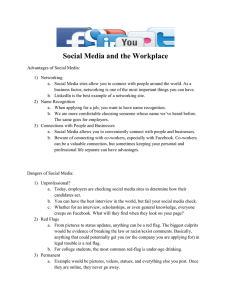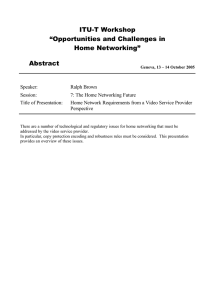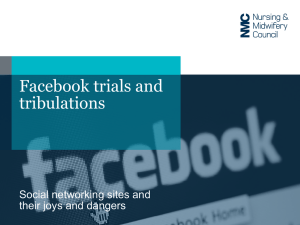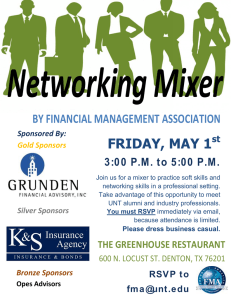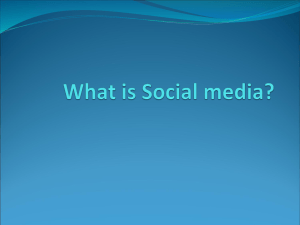Lesson Plan
advertisement
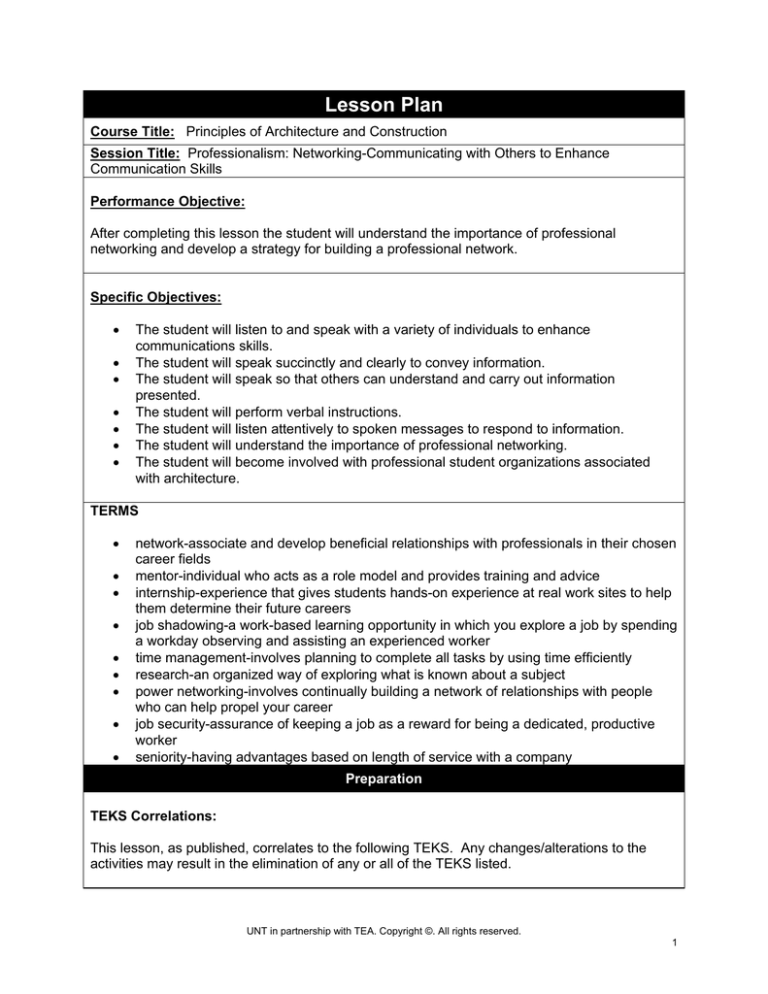
Lesson Plan Course Title: Principles of Architecture and Construction Session Title: Professionalism: Networking-Communicating with Others to Enhance Communication Skills Performance Objective: After completing this lesson the student will understand the importance of professional networking and develop a strategy for building a professional network. Specific Objectives: The student will listen to and speak with a variety of individuals to enhance communications skills. The student will speak succinctly and clearly to convey information. The student will speak so that others can understand and carry out information presented. The student will perform verbal instructions. The student will listen attentively to spoken messages to respond to information. The student will understand the importance of professional networking. The student will become involved with professional student organizations associated with architecture. TERMS network-associate and develop beneficial relationships with professionals in their chosen career fields mentor-individual who acts as a role model and provides training and advice internship-experience that gives students hands-on experience at real work sites to help them determine their future careers job shadowing-a work-based learning opportunity in which you explore a job by spending a workday observing and assisting an experienced worker time management-involves planning to complete all tasks by using time efficiently research-an organized way of exploring what is known about a subject power networking-involves continually building a network of relationships with people who can help propel your career job security-assurance of keeping a job as a reward for being a dedicated, productive worker seniority-having advantages based on length of service with a company Preparation TEKS Correlations: This lesson, as published, correlates to the following TEKS. Any changes/alterations to the activities may result in the elimination of any or all of the TEKS listed. UNT in partnership with TEA. Copyright ©. All rights reserved. 1 130.42 (c)(8)(A) …speak succinctly and clearly to convey information… 130.42 (c)(8)(B) …speak so that others can understand and carry out information presented… 130.42 (c)(8)(C) …provide verbal instructions… 130.42 (c)(8)(D) …listen attentively to spoken messages to respond to information… Interdisciplinary Correlations: English: 110.31 (c)(21)(B) … organize information gathered from multiple sources to create a variety of graphics and forms… 110.31 (c)(22)(B) …evaluate the relevance of information to the topic and determine the reliability, validity, and accuracy of sources (including Internet sources) by examining their authority and objectivity… 110.31 (c)(23)(C) … use graphics and illustrations to help explain concepts where appropriate 110.31 (c)(23)(D) … use a variety of evaluative tools (e.g., self-made rubrics, peer reviews, teacher and expert evaluations) to examine the quality of the research… Teacher Preparation: Teacher will review the terms in the outline, PowerPoint and handouts to become familiar with lesson. Teacher should locate and evaluate various resources and websites before lesson. Teacher can have the given websites prepped and ready for display during the lesson. Teacher should determine the assignments to be evaluated and the associated rubrics. References: http://www.sfgate.com/cgi-bin/article.cgi?f=/g/a/2010/04/06/investopedia43198.DTL http://jobsearch.about.com/od/networkingsites/a/networkingsites.htm UNT in partnership with TEA. Copyright ©. All rights reserved. 2 Utilize search engine for information, articles, and activities involving professional social networking. Instructional Aids: 1. Display for PowerPoint, websites to learn more about professional social networking. 2. Reference books (Making the Most of Your Internship, Kaser and Brooks, Cengage Learning; Architectural Drafting and Design, 6th Edition, Jefferis, Madsen, and Madsen, Delmar Cengage Learning 3. Reference websites Materials Needed: 1. Printer paper 2. Article: “Six Career-Killing Mistakes Using Facebook” 3. Internet for Undercover Boss Show Equipment Needed: 1. Computer with PowerPoint and Internet access 2. Projector to show episodes of Undercover Boss 3. Computers for Students to conduct research on professional social networking Learner Preparation: Ask students to define social networking. Then ask students what means of communication they commonly use to remain in touch with their personal network. Ask students to write the names of professional/personal contacts who they feel are important in their daily and professional lives. Then ask students to list the best means of communication for each of the people on their list. Ask students to read the “Six Career-Killing Facebook Mistakes” article. Then ask students to outline the ten main points covered in the article. This assignment will prepare students for classroom discussion. Introduction Introduction (LSI Quadrant I): SHOW: Show students a picture of a spider web with the names of people in the web. Then explain how a professional social network is the group of people you associate with for professional and social reasons. ASK: Ask students why it is important to communicate with other professionals in the UNT in partnership with TEA. Copyright ©. All rights reserved. 3 architecture field. What are the best strategies for keeping in touch with other architecture professionals? SAY: Today’s economy is highly unpredictable. Individuals are projected to change careers 12 to 14 times before they turn age 38. This makes it even more important to establish a strong professional social network. The network helps individuals keep up-to-date in the profession and makes individuals aware of job openings. ASK: Have you developed a professional network? Who is in your professional network and why is their presence important? SAY: Friends in your professional network help to generate new ideas. The professional network also provides an outlet for sharing information, frustrations, and celebrations. ASK: Why should you pay attention to all new people who you meet in the architecture industry? SAY: The new individuals you meet may provide your next career break. Outline Outline (LSI Quadrant II): Instructors can use the PowerPoint presentation, slides, handouts, and note pages in conjunction with the following outline. MI Outline I. Network-association of beneficial relationships with professionals in your chosen career field A. Internship 1. hands-on experience at real work sites to help determine your future careers 2. portfolio-a collection of projects, work experiences, awards, a resumé, and other items that applicants present to prospective employers to validate their value to the company 3. will not make you rich 4. provides valuable experience and contacts B. Mentor-individual who acts as a role model and provides training and advice C. Join Professional Organizations 1. attend conferences 2. communicate with other professionals 3. keep up-to-date with architecture dynamics D. Getting the Most from Your Learning Experience 1. importance of time management-planning to complete all tasks by using time efficiently 2. job shadowing-a work-based learning Notes to Instructor You can never have too many friends in today’s complex economy. The professional network is valuable for keeping up-to-date, communicating, and learning about opportunities. During bad economic times, the professional network helps individuals learn about job openings. Use PowerPoint and websites as aid. UNT in partnership with TEA. Copyright ©. All rights reserved. 4 opportunity in which you explore a job by spending a workday observing and assisting an experienced worker II. Who You Know Counts A. Job Security-the assurance of keeping a job as a reward for being a dedicated, productive worker B. Seniority-having advantages based on length of service with a company C. Power Networking-involves continually building a network of relationships with people who can help propel your career III. Make an Impression A. Ask questions B. Work with a mentor C. Use your internship experience to add value to your resumé/portfolio D. Highlight your leadership skills IV. Importance of Clear Communication with Your Professional Social Network A. Be a Great Listener B. Ask Questions C. Keep it Simple D. Focus on the Objective E. Continually Assess Your Own Communication Skills V. Develop a Communication Plan for Your Professional Network A. Determine the Best Means of Communication B. Determine the Reasons for Communication C. Determine the Best Time for Communication D. Make the Communication Process Valuable to All Participants All new acquaintances are important because they could be your next boss or your next career opportunity. People appreciate when you remember their name and something important for their personality. Use PowerPoint as aid. The best way to make a solid impression is to be a good listener. Be attentive to the interests of others and you will win over friends. Use PowerPoint as aid. Communication is essential for all relationships. Good listeners are a valuable commodity. Use PowerPoint as aid. Keeping in touch with members of your professional network is important. Determine the best channel of communication and the best time to communicate with other professionals. Use PowerPoint as aid. UNT in partnership with TEA. Copyright ©. All rights reserved. 5 Verbal Linguistic Logical Mathematical Visual Spatial Musical Rhythmic Bodily Kinesthetic Intrapersonal Interpersonal Naturalist Existentialist Application Guided Practice (LSI Quadrant III): Teacher will explain the value of mentors. Then teacher will ask students to list a professional who they would like to have as a mentor. Students will conduct research about the individual they have selected to be their mentor. Teacher will ask students to make a list of their greatest supporters at school. Ask students what each supporter has provided and then explain the importance of having a professional social network. “Who you know is more important than what you know.” Ask students what this quote means and then relate the definition to networking. Independent Practice (LSI Quadrant III): Students will be given time to read the “Career-Killing Facebook Mistakes” article. Then students will outline the ten main points covered in the article. Students will work on the “Networking Calendar Project.” Summary Review (LSI Quadrants I and IV): Question: Why must professionals in all careers form social networks? Question: Why are communication skills crucial for developing and maintaining a professional social network? Question: What are the advantages and disadvantages of using the latest technology for keeping in touch with your professional social network? Question: Why is it important to treat all new acquaintances with respect? UNT in partnership with TEA. Copyright ©. All rights reserved. 6 Evaluation Informal Assessment (LSI Quadrant III): Instructor should observe the work ethic of students while they work on the reading assignment/worksheet. Instructor should monitor student progress on the “Networking Calendar Project” and remind participants about the deadlines for the project. Instructor should move around the classroom to make sure that students are participating in all class activities. Formal Assessment (LSI Quadrant III, IV): Students will be evaluated on their Networking Calendar Project using the assigned rubric. Extension Extension/Enrichment (LSI Quadrant IV): What Colleges Expect/Offer? Ask students to research five universities that offer architecture degrees. Students will use the Internet and other resources to determine if the universities offer internships and mentor programs. Students will prepare an outline that lists the internship and mentor program offered by the five universities. Students will report their findings to other students in the class. My Network Collage Students put together a collage of pictures representing people in their professional social network. Captions will be included under each picture to describe the relationship (teacher, mentor, architecture professional) in the network. UNT in partnership with TEA. Copyright ©. All rights reserved. 7 Principles of Architecture and Construction Professionalism: Networking-Communicating with Others to Enhance Communication Skills Guided Practice (LSI Quadrant III) What professional would you like to have as your mentor? Conduct research on the person you have selected and then make an attempt to contact the person. Who are your greatest supporters at school? What contribution has each supporter made to your life? “Who you know is more important than what you know.” What does this statement mean? How does this statement relate to professional networking? Independent Practice (LSI Quadrant III) Career-Killing Facebook Mistakes Read the “Career-Killing Facebook Mistakes” article. Outline the ten main points covered in the article. Networking Calendar Project Prepare a calendar for the 12 months of the upcoming year. You can use the internet to print the calendar pages. Then create a message, relating to professional networking in architecture for each month. Highlight professional meeting and other opportunities for each month of the year. Each month should include a calendar page showing dates, days of the week, etc., and the graphic page that includes a message about professional networking. This project will be evaluated using the associated rubric. Extension/Enrichment (LSI Quadrant IV) What Colleges Expect/Offer? Research five universities that offer architecture degrees. Use the Internet and other resources to determine if the universities offer internships and mentor programs. Prepare an outline that lists the internship and mentor program offered by the five universities. You will report your findings to other students in the class. This project will be evaluated for completeness. UNT in partnership with TEA. Copyright ©. All rights reserved. 1 My Network Collage Put together a collage of pictures representing people in your professional social network. Captions should be included under each picture to describe the relationship (teacher, mentor, architecture professional) in the network. UNT in partnership with TEA. Copyright ©. All rights reserved. 2 Professional Networking Calendar Project Rubric Student Name: CATEGORY ________________________________________ 25 20 15 10 Sources - Quality Students include 4 or Students include 2-3 high more high quality sources. quality sources . Students include 2-3 sources but some of are questionable quality. Students include fewer than 2 sources. Content Highly defined content that Good content about covers professional professional networking. networking. Adequate information about professional networking. Information could be enhance Minimal information about professional networking. Students create an original, accurate and accurate product that interesting product that adequately addresses the adequately addresses the issue. issue. Students create an accurate product but it does not adequately address the issue. The product is not accurate. Students include 4 or Students include 2-3 high more high quality sources. quality sources. Students include 2-3 sources but some of are questionable quality. Students include fewer than 2 sources. Campaign/Product Students create an Sources - Quality Total Points Earned _______ UNT in partnership with TEA. Copyright ©. All rights reserved. 3 Six Career-Killing Facebook Mistakes With more than 400 million active visitors, Facebook is arguably the most popular social networking site out there. And while the site is known for the casual social aspect, many users also use it as a professional networking tool. With that kind of reach, Facebook can be a valuable tool for connecting to former and current colleagues, clients and potential employers. In fact, surveys suggest that approximately 30% of employers are using Facebook to screen potential employees – even more than those who check LinkedIn, a strictly professional social networking site. Don't make these Facebook faux-pas – they might cost you a great opportunity. IN PICTURES: Six Hot Careers With Lots Of Jobs 1. Inappropriate Pictures It may go without saying, but prospective employers or clients don't want to see pictures of you chugging a bottle of wine or dressed up for a night at the bar. Beyond the pictures you wouldn't want your grandparents to see, seemingly innocent pictures of your personal life will likely not help to support the persona you want to present in your professional life. 2. Complaining About Your Current Job You've no doubt done this at least once. It could be a full note about how much you hate your office, or how incompetent your boss is, or it could be as innocent as a status update about how your coworker always shows up late. While everyone complains about work sometimes, doing so in a public forum where it can be found by others is not the best career move. Though it may seem innocent, it's not the kind of impression that sits well with a potential boss. 3. Posting Conflicting Information to Your Resumé If you say on your resumé that your degree is from Harvard, but your Facebook profile says you went to UCLA, you're likely to be immediately cut from the interview list. Even if the conflict doesn't leave you looking better on your resumé, disparities will make you look at worst like a liar, and at best careless. (Social networking can also be used as its own job. Learn more in Make Money with Social Networking Sites.) UNT in partnership with TEA. Copyright ©. All rights reserved. 1 4. Statuses You Wouldn't Want Your Boss to See Everyone should know to avoid statuses like "Tom plans to call in sick tomorrow so he can get drunk on a Wednesday. Who cares that my big work project isn't done?" But you should also be aware of less flamboyant statuses like "Sarah is watching the gold medal hockey game online at her desk." Statuses that imply you are unreliable, deceitful, and basically anything that doesn't make you look as professional as you'd like, can seriously undermine your chances at landing that new job. 5. Not Understanding Your Security Settings The security settings on Facebook have come a long way since the site started. It is now possible to customize lists of friends and decide what each list can and cannot see. However, many people do not fully understand these settings, or don't bother to check who has access to what. If you are going to use Facebook professionally, and even if you aren't, make sure you take the time to go through your privacy options. At the very least, your profile should be set so that people who are not your friend cannot see any of your pictures or information. (These rules apply to Twitter as well, and you can also use Twitter to find a new job. Find out more in Tweet Your Way to a Sweet Job.) 6. Losing by Association You can't control what your friends post to your profile (although you can remove it once you see it), nor what they post to their own profiles or to those of mutual friends. If a potential client or employer sees those Friday night pictures your friend has tagged you in where he is falling down drunk, it reflects poorly on you, even if the picture of you is completely innocent. It's unfortunate, but we do judge others by the company they keep, at least to some extent. Take a look at everything connected to your profile, and keep an eye out for anything you wouldn't want to show your mother. Facebook Can Help You Get Hired … Or Fired The best advice is to lock down your personal profile so that only friends you approve can see anything on that profile. Then, create a second, public profile on Facebook purely for professional use. This profile functions like an online resumé, and should only contain information you'd be comfortable telling your potential employer faceto-face. Having a social networking profile is a good thing – it presents you as technologically and professionally savvy. Just make sure your profile is helping to present your best side – not the side that got drunk at your buddy's New Year's party. UNT in partnership with TEA. Copyright ©. All rights reserved. 2 If you're still feeling uninformed, check out last week's business highlights in Water Cooler Finance: Auto Hope, Bubbling Oil and Obamanomics. Original story - Six Career-Killing Facebook Mistakes Copyright © 2010. Investopedia ULC. All rights reserved. Investopedia.com is a Forbes Digital Company. UNT in partnership with TEA. Copyright ©. All rights reserved. 3
